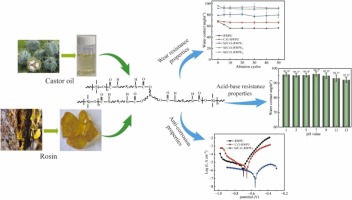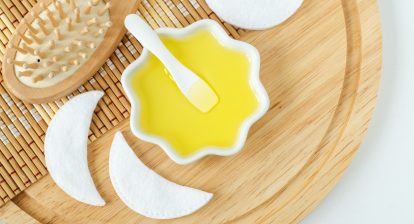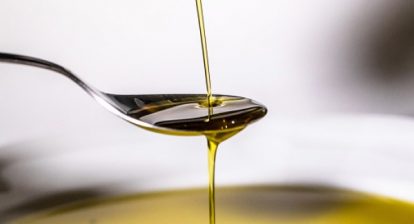Cationic waterborne polyurethane (WPU) dispersions are distinguished by their quaternary ammonium groups, conferring a positive charge (Dong et al., 2018). This property grants polyurethane unique characteristics, such as excellent adhesion to anionic substrates like leather and glass (Liang et al., 2018b). However, most WPU molecules exhibit a linear structure, resulting in inadequate thermal stability, water resistance, and brittleness, necessitating further enhancements (Liu et al., 2023).
In the realm of WPU, the predominant polyols are derived from petroleum sources, presenting challenges related to refinement, nonrenewability, and biodegradability concerns, which can harm the environment. A promising alternative involves obtaining polyols from vegetable oils. Among these, castor oil (C.O.) has gained widespread recognition owing to its eco-friendliness, widespread availability, strong biodegradability, and abundant sources (Mülazim et al., 2011). Notably, C.O. comprises 88% ricinoleic acid and exhibits an average hydroxyl functionality of 2.7 (Gama et al., 2019). The presence of double bonds and nonpolar alkane structures in C.O. results in WPU formulations with favorable characteristics, including flexibility, water resistance, and low-temperature resistance (Barbirato et al., 2018). Shi et al. (2021) conducted research on C.O.-modified bio-based WPU (CWBPU) using pentamethylene diisocyanate (PDI) and bio-based polyether polyols (H-2000) as raw materials, yielding increased tensile strength (from 3.85 to 8.86 MPa) and a gradual decrease in elongation at break (from 496.2% to 356.6%) with higher C.O. content. Similarly, Cheng et al. (2022) developed C.O.-based silicone-modified UV-cured acrylate coatings, featuring impressive tensile strength (up to 10.2 MPa), elongation at break (88.4–162.5%), high transparency (90–98%), and excellent chemical resistance
Hydroxyl-terminated polydimethylsiloxane (PHT) represents a notable example of organosilicon products. Its chemical structure combines both inorganic and organic attributes, including a low glass transition temperature, low surface energy, remarkable thermal stability, and outstanding water resistance (Hu et al., 2020). Rosin, a readily available biomass resource with an affordable price point, can be transformed into modified diols for polyurethane synthesis. This process imparts high hardness and mechanical properties to polyurethane, replacing petroleum-based polyols (Li et al., 2021). This group (Yu et al., 2021) resulted in the successful preparation of cationic WPU dispersions using organosilane and rosin derivatives as raw materials, showcasing significant enhancements in mechanical properties, surface hydrophobicity, and water resistance of WPU films. However, current biobased waterborne polyurethanes are susceptible to acid, alkali or other chemicals, resulting in reduced properties.
In this study, we aim to further enhance the water, wear, acid, and alkali resistance of WPU coatings. To this end, we first modified rosin with acrylic acid, and then further modified with glycidyl methacrylate to prepare a rosin ester with hydroxyl groups, in replacement of petroleum-based polyols, and then used to react with isocyanate to introduce the rigid tricyclic phenanthrene structure of rosin into the polyurethane backbone and improve the wear resistance and hydrophobicity of the coatings. Meanwhile, C.O. and organosilicon were introduced into the WPU coatings to improve the acid, alkali, wear, and corrosion resistance and hydrophobicity by enhancing the densification and reducing the surface energy of the coatings. Finally, rosin-based WPU (RWPU), C.O.-modified RWPU (C.O.-RWPU) and organosilicon-modified C.O.-RWPU (Si/C.O.-RWPU) coatings were synthesized. These were developed by self-emulsification method using a rosin-based diol, aliphatic isophorone diisocyanate, N-methyldiethanolamine as a cationic hydrophilic chain extender, and hydroxyl-terminated PHT, in addition to C.O. as modifiers. This work focused on assessing the thermal stability, water resistance, wear resistance, acid and alkali resistance and anticorrosion properties of C.O.-RWPU and Si/C.O.-RWPU dispersions, providing valuable insights for the development of innovative biomass polyurethane formulations.







